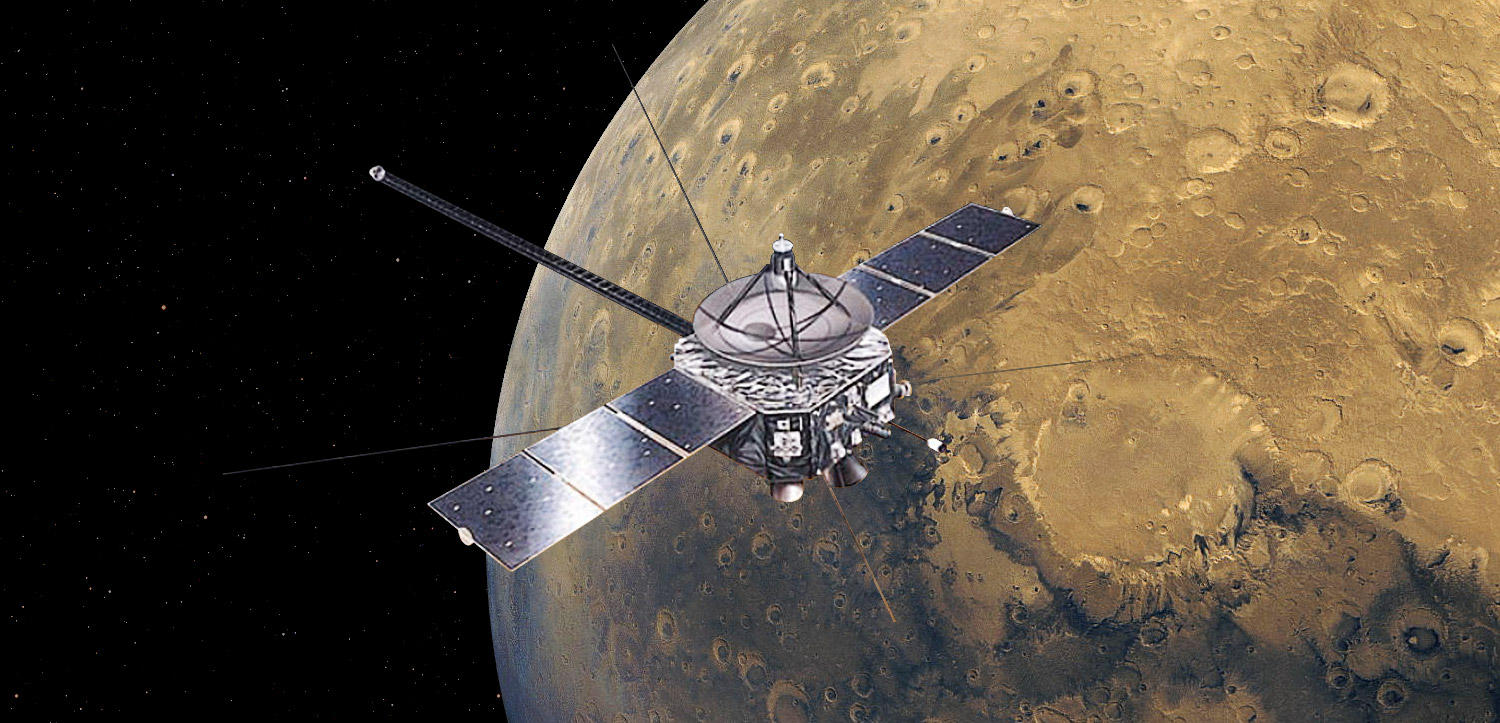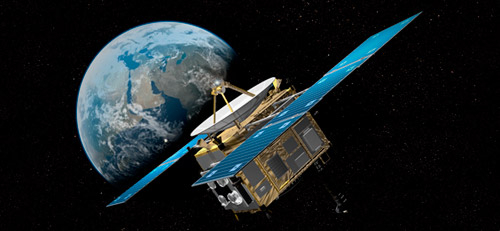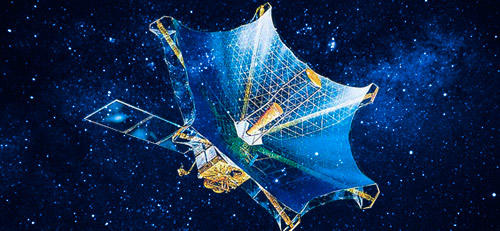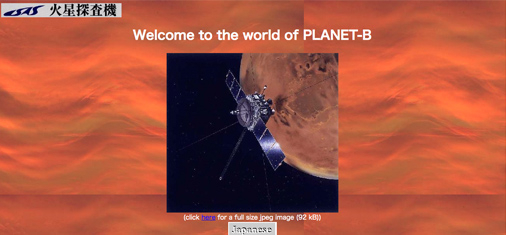NOZOMI (PLANET-B) was Japan's first Mars explorer and its main mission was to research Martian upper atmosphere by focusing on the interaction with solar wind. On July 4, 1998, the explorer was launched by M-V-3 rocket from Kagoshima Space Center in Uchinoura. On the way to Mars, however, troubles occurred with NOZOMI and substantial orbit changes were made. Thus, it approached closely Mars in December 2003, four years behind the original plan. Due to frequent problems, however, the systems required to enter orbit around Mars did not work. Despite of every possible effort to restore the functions, we had to abandon insertion of the explorer into orbit around Mars on December 9, 2003. NOZOMI became an artificial planet that flies forever in orbit around the Sun near that of Mars.
| Name (pre-launch in parentheses) | のぞみ(PLANET-B) |
|---|---|
| International Designation code | 1998-041A |
| Objectives | Research on interaction between Martian upper atmosphere and solar wind, observation of Martian magnetic field, remote-sensing of Martian surface and satellites, etc. |
| Launch Date | 03:12, July 4, 1998 (JST) |
| Launch Location | Kagoshima Space Center (Uchinoura) |
| Launch Vehicle | M-V-3 |
| Weight | Approx. 540 kg |
| Dimensions | 1.6m long x 1.6m wide x 0.58m high 52m long from end to end of wire antenna 6.22m long from end to end of solar array paddles Installing plates inscribing names of 270,000 people onto the body |
| Type of Orbit | Heliocentric |
| Scientific Instruments | 1.Mars Imaging Camera 2.Magnetic Field Measurement (MGF) 3.Probe for Electron Temperature (PET) 4.Electron Spectrum Analyzer (ESA) 5.Ion Spectrum Analyzer (ISA) 6.Electron and Ion Spectrometer (EIS) 7.Extra Ultraviolet Scanner (XUV) 8.Ultraviolet Imaging Spectrometer (UVS) 9.Plasma Wave and Sounder (PWS) 10.Low Frequency Plasma Wave Analyzer (LFA) 11.Ion Mass Imager (IMI) 12.Mars Dust Counter (MDC) 13.Neutral Mass Spectrometer (NMS) 14.Thermal Plasma Analyzer (TPA) |
| End of Operation | December 9, 2003 |
| Operation | NOZOMI performed a lunar swing-by twice on August 24 and December 8, 1998. On December 20, 1998, it performed a powered swing-by of earth at around 1,000 km, the nearest point from the earth, but due to a defective thrust valve, it had insufficient thrust. Fuel consumption was excessive as a consequence of the change in flight course, and it became impossible to insert the explorer into orbit around Mars. Later, the explorer’s arrival at Mars was postponed from October 1999 to January 2004. NOZOMI performed the earth swing-by twice more in December 2002 and June 2003 to enter the orbit toward Mars. In April 2003, however, there were insoluble failures in the communication and thermal-control systems. Finally, to prevent NOZOMI from crashing on Mars, the mission team changed the explorer’s flight course on the night of December 9. |
| Results | NOZOMI provided us with valuable data by conducting a variety of observations such as measurement of hydrogen Lyman-alpha light in interplanetary space. |




